By Melody Wright, LMFT
Have you ever felt like your emotions were speaking a language you couldn’t understand?
Or maybe you’ve spent years brushing feelings aside, unsure of how to face them.
If this resonates, you’re not alone…and guess what it’s not your fault!
For many people, myself included, understanding and processing emotions isn’t something we were taught while growing up.
But here’s the truth, it’s never too late to learn.
By learning to tune in to your internal conversation, and stay curious about what you’re feeling (without judging it) you’ll find that your emotions are there to guide you and heal you.
So if you’ve never been taught how to recognize and process emotions, this blog is for you.
In this blog, we are going to talk about ways to help you decode your emotions and equip you with the tools to navigate them with compassion and clarity.
But first….
What Are Emotions For?
Emotions are a natural and essential part of being human.
They’re your body signaling what’s happening inside you and around you.
Far from being a weakness or inconvenience, emotions are like an internal compass, guiding you toward what’s important and helping you make sense of what you’re experiencing in the world around you.
At their core, emotions are messages from your brain and body, designed to help you survive and thrive.
For example:
Fear alerts you to danger, encouraging you to protect yourself.
Anger signals that something important to you has been threatened, like your boundaries or values.
Sadness often arises from loss or unmet needs, inviting you to slow down and reflect.
Joy reminds you of what brings you happiness and fulfillment, encouraging connection and celebration.
Why Do We Have Emotions?
Emotions play a crucial role in our lives, but understanding them can feel confusing or overwhelming, especially if you’ve been taught to dismiss them.
The truth is, emotions are complex and multifaceted, serving different purposes depending on how we view them.
When you look at emotions from different perspectives, you can better understand why they’re so important and how they work to support you.
Here are a few examples:
Emotions as Survival Tools:
Emotions help us respond quickly to threats or opportunities. Fear can trigger your fight-or-flight response, keeping you safe in dangerous situations. On the other hand, joy strengthens bonds within our relations, which is beneficial for our social and emotional well-being.Emotions as Communication:
Emotions also serve as a universal language, helping us connect with others. Think about a baby crying, without words, their sadness or discomfort communicates a need. Similarly, when you’re upset, your emotions can signal that you’re needing supportEmotions as Guides to Values:
As a therapist, I often tell my clients that emotions can point you toward what matters. For example, feeling guilt might show you that your actions don’t align with your values, while pride reminds you of your accomplishments.Emotions as Energy in Motion:
Some approaches, like somatic therapy, see emotions as "energy in motion." This means emotions need to flow through you rather than be suppressed. Bottling up emotions often leads to tension, burnout, or even physical symptoms.
How to View Emotions Differently
For those of us who have been taught to suppress or ignore our emotions, or encountered emotional neglect, we tend to have a hard time connecting with our internal conversations and body sensations.
Because of this, it can leave us unsure of how to navigate what we’re experiencing on an emotional, mental, and even physical level.
If you desire to understand yourself more, explore deeper authenticity or begin a healing journey, the first step is shifting the perspective of “my emotions aren’t important”.
But how do you do that??
I’m glad you asked!
Here are a few ways to reframe your perspective of the emotions when they come up:
Curiosity Over Judgment: Instead of thinking, “Why am I feeling this way?” try asking, “What is this feeling trying to tell me?”
Messages, Not Problems: Emotions aren’t something to “fix.” They’re signals that something needs attention.
Your Body’s Language: Emotions show up physically, too, including tight shoulders with stress, and a racing heart with excitement. Paying attention to these sensations can help you decide what you’re feeling.
You can also ground yourself with affirmations to create space for your emotions when you aren’t sure what to make of them as they come up. Here are a few:
“It’s okay to feel this way.”
“My emotions are valid and meaningful.”
“This feeling will pass.”
As you begin shifting perspectives, you’ll start to rewire your brain to feelings of safety around your emotions.
**If you would like to learn more about how emotional neglect can affect you check out my blog - How Growing Up with Emotionally Unavailable Parents Still Affects You And How to Heal
Do You Suppress Your Emotions?
Have you ever felt like you don’t really know what you’re feeling?
Or maybe you find yourself going through life on autopilot, disconnected from your emotions and your body. If this sounds familiar, you’re not alone.
It might be a sign that you’ve been suppressing your emotions.
For many, this pattern starts early.
If you grew up in an environment where emotions weren’t acknowledged, validated, or understood, you may have learned to push them down just to get by.
Suppressed emotions don’t just disappear, though. They tend to sneak out in other ways, such as:
Struggling to name what you’re feeling. You might catch yourself saying, “I don’t know how I feel,” or defaulting to vague words like “fine” or “okay.”
Feeling emotionally numb. Instead of experiencing the full range of emotions, you might feel disconnected, as though nothing really touches you deeply.
Overreacting to small triggers. Ever find yourself snapping at someone over something minor or feeling overwhelmed by what seems like a small setback? Suppressed emotions can build up until they explode in unexpected ways.
Physical symptoms with no clear cause. Unexplained headaches, muscle tension, or even stomach issues might be your body’s way of holding onto emotions you’ve buried.
Sound familiar? If so, it’s okay!
These are common signs that your emotions have been ignored or suppressed for too long.
But the good news is that recognizing these patterns is the first and most important step toward change.
You’re not alone in this, and it’s never too late to learn how to reconnect with your emotions and let them guide you in healthy, meaningful ways.
How to Begin Tuning Into Your Emotions
As your perspectives shift around emotions from unsafe to a sense of safety, you may notice that you begin to develop something called emotional awareness.
Now I want you to understand that developing emotional awareness takes time and practice, so remember to give yourself compassion as you learn.
Here are some starting points you can use to begin tuning into your emotions:
Check in with your body. Your body can hold clues about your emotional state. Tightness in your chest might indicate anxiety, a sense of heaviness could signal sadness, or a fluttering stomach might point to excitement or nervousness. Each day take a moment to scan your body from head to toe, noticing areas of tension, discomfort, or ease.
Use tools like an emotion wheel. Expanding your emotional vocabulary beyond basic labels like “happy” or “sad” can help you identify more in-depth feelings, like “overwhelmed,” “content,” or “lonely.” This deeper understanding can also help you articulate your emotions more clearly when talking to others or journaling. You might find it helpful to keep an emotion wheel handy as a visual guide.
Ask yourself simple questions. Pause during your day and ask, “What am I feeling right now?” or “What might have triggered this feeling?” These questions create space for self-awareness. If it feels difficult to pinpoint your emotions, ask yourself, “Where in my body do I feel this?” or “What does this feeling remind me of?”
Building emotional awareness doesn’t happen overnight, but even small steps, like pausing to check in with yourself, can create a powerful shift.
What Are Healthy Outlets for Emotional Processing?
Now that you’ve learned how to identify your emotions, the next step is figuring out how to process them.
Processing emotions isn’t just about “feeling better”, it’s about giving your emotions the space they need to move through you, so they don’t stay stuck or come out in unhelpful ways.
If you’ve been suppressing emotions for a long time, this can feel overwhelming or unfamiliar at first, but it’s entirely possible with practice.
Here are some strategies to help you work through your feelings in healthy, constructive ways:
Write it out: Journaling can be a game-changer when it comes to processing emotions. Grab a notebook and let your thoughts flow without judgment. Don’t worry about structure, just write whatever comes to mind. Sometimes, seeing your emotions on paper can bring clarity and relief.
Talk it out: Sharing your feelings with someone you trust can be incredibly freeing. Whether it’s a close friend, a family member, or a therapist, talking about what you’re feeling helps validate your experience and reminds you that you don’t have to face it alone.
Move your body: Physical activity is one of the most underrated tools for emotional processing. Stretching, walking, dancing, or even shaking out your arms can release pent-up tension and help your emotions flow. Think of it as giving your feelings a way to exit your body.
Get creative: Art, music, and other creative outlets are powerful ways to express emotions that words can’t capture. Whether you’re painting, writing a song, or even doodling, creativity can help you process what you’re feeling in a way that feels safe and freeing.
Why Is It Important to Reach Out for Support?
Sometimes emotions can feel overwhelming or impossible to handle on your own, and that’s completely okay.
This is where therapy can make a difference.
Working with a therapist is more than just “talking it out”; it’s a chance to develop the skills and self-awareness to truly connect with your emotions instead of pushing them away.
Therapy provides a safe and supportive space to explore feelings you might have ignored or suppressed. A therapist can help you:
Identify patterns. They can guide you in uncovering habits or beliefs that may be keeping you disconnected from your emotions.
Learn to name your emotions. Many people struggle to pinpoint exactly what they’re feeling, and therapy helps you build the emotional vocabulary to understand and express yourself.
Tune into your body. Emotions often show up physically, and therapists trained in somatic techniques can help you notice and release these sensations in healthier ways.
Develop coping tools. You’ll learn strategies to process and manage emotions without bottling them up or letting them take over.
Imagine what it would feel like to approach your emotions with curiosity instead of fear. Therapy can empower you to listen to what your emotions are telling you, and give you the confidence to navigate life with more clarity, self-compassion, and strength.
Reaching out for support is a powerful act of self-care.
Our therapists here at Life By Design Therapy™ are experts at supporting emotional processing.
Don’t wait to give yourself the tools and support you deserve, consider reaching out to us today.
Click the button below to take the first step!
Final Thoughts
Maybe no one ever showed you how to understand or process your emotions.
If that’s true, it’s not a reflection of your worth, it’s a reflection of what you weren’t given.
But the good news is it’s never too late to learn.
Learning to connect with your emotions is a journey, and like any journey, there will be moments of progress and moments that challenge you.
What matters most is showing up for yourself with kindness and patience, even on the hard days.
Each time you pause to name what you’re feeling or to sit with an emotion instead of pushing it away, you’re building a deeper relationship with yourself.
Over time, this work will ripple outward, enriching your relationships, strengthening your sense of self, and creating a life that feels more aligned and meaningful.
Remember, you don’t have to do this alone. At Life By Design Therapy™, we specialize in holistic and somatic-based practices to help you go beyond traditional talk therapy and truly connect with yourself.
If you’re ready to take that first step, schedule a quick phone consultation with our Coordinator [HERE]. We’re here to walk this journey with you.
This Weeks Affirmations
I am capable of learning to understand and process my feelings.
I am worthy of compassion and patience as I explore my emotional landscape.
Every emotion I feel is a message guiding me toward growth and healing.
I give myself permission to feel, express, and release my emotions in healthy ways.
I honor my emotions by giving them the attention and care they deserve.
Additional Resources
**If you’re interested in learning more about emotional neglect check out these books below:
Self-Compassion: The Proven Power of Being Kind to Yourself by Dr. Kristin Neff
Hold Me Tight: Seven Conversations for a Lifetime of Love by Dr. Sue Johnson
The Drama of the Gifted Child: The Search for the True Self by Alice Miller
The Disease to Please: Curing the People-Pleasing Syndrome by Harriet B. Braiker
Running on Empty: Overcome Your Childhood Emotional Neglect by Jonice Webb
**Some product links are affiliate links, which means we'll receive a commission if you purchase through our link, at no extra cost to you. Please read the full disclosure here.






















